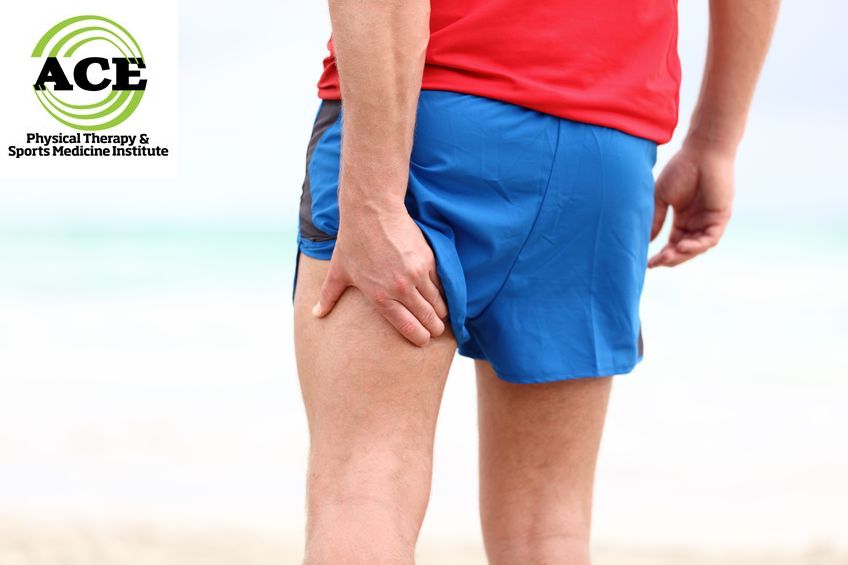PROXIMAL HAMSTRING INJURIES

Tid Bits of Info
- There are 4 hamstring muscles and 3 out of 4 flex the knee and extend the knee.
- Upper hamstring injuries are rare, and it has been reported that less than 15% of all hamstring injuries occur in this area.
- MRI scans can accurately diagnose the severity of the injury.
- Many of these injuries will heal utilizing a conservative approach; the most severe cases might require surgery.
- If you suffer an upper hamstring injury, seek out the advice and treatment from a Physical Therapist.
Athletes suffering from proximal hamstring injuries may complain of pain in the thigh and hip area when sitting, walking, or when flexing the hip. These types of injuries are uncommon (the incidence of occurrence is less than 15% of all hamstring injuries). Unfortunately, proximal hamstring injuries can be severe, challenging to rehabilitate, and even left undiagnosed. Accurate diagnosis and proper treatment can rehabilitate these injuries thoroughly, but it takes a long time.
There are 4 hamstring muscles: semitendinous, semimembranosus, biceps femoris long head and biceps femoris short head. These help to bend the knee into flexion; and all of them with the exception of the biceps femoris short head, extend the hip as well. Most upper hamstring injuries occur when the knee is extended, and the hip flexes in quick motions that stretch violently, eliciting a forceful contraction. The muscle continues to forcefully contract while it is elongated due to the motions of the hip and knee. This force occurs at the place where the hamstring attaches to pelvis. It can be so excessive that the tendon(s) is damaged and “pulled or avulsed” off of the tuberosity. The tendon can be damaged where the muscle fibers connect to the tendon tissue, which is known as the musculotendinous junction.
Diagnosis is difficult at times. The most common symptoms are the following: sharp pain at the site of the injury and often pain to the touch over the ischial tuberosity. The injured individual will have limited motion in the hip when they try to flex it. There might be bruising in the muscle but rarely at the ischial tuberosity. The injured individual will have difficulty walking, and sitting is painful. In the most severe cases, there can be neural involvement due to the location of the injury and the proximity of the sciatic nerve. The symptoms in the leg can range from tingling and pain down the leg to complete loss of muscle function in the parts of the affected leg.

Accurate diagnosis of these injuries is imperative to determine a prognosis and a plan of care. In most instances, the patient goes through a period of conservative treatment that can last several weeks to months. The progress or lack of progress in the rehabilitation
























